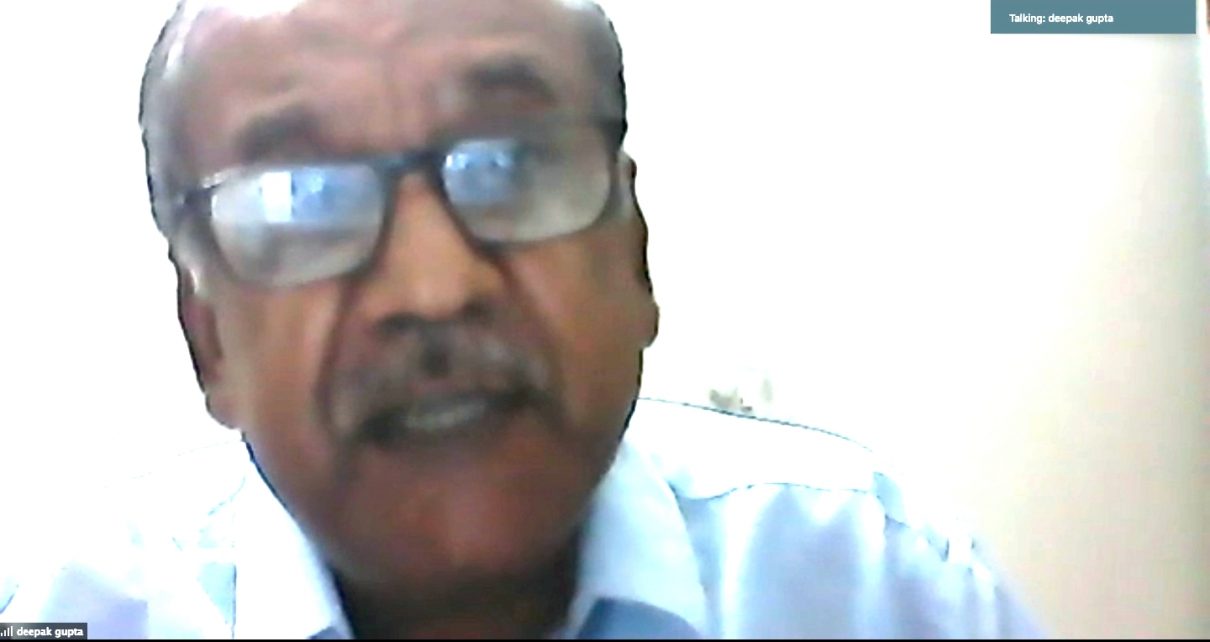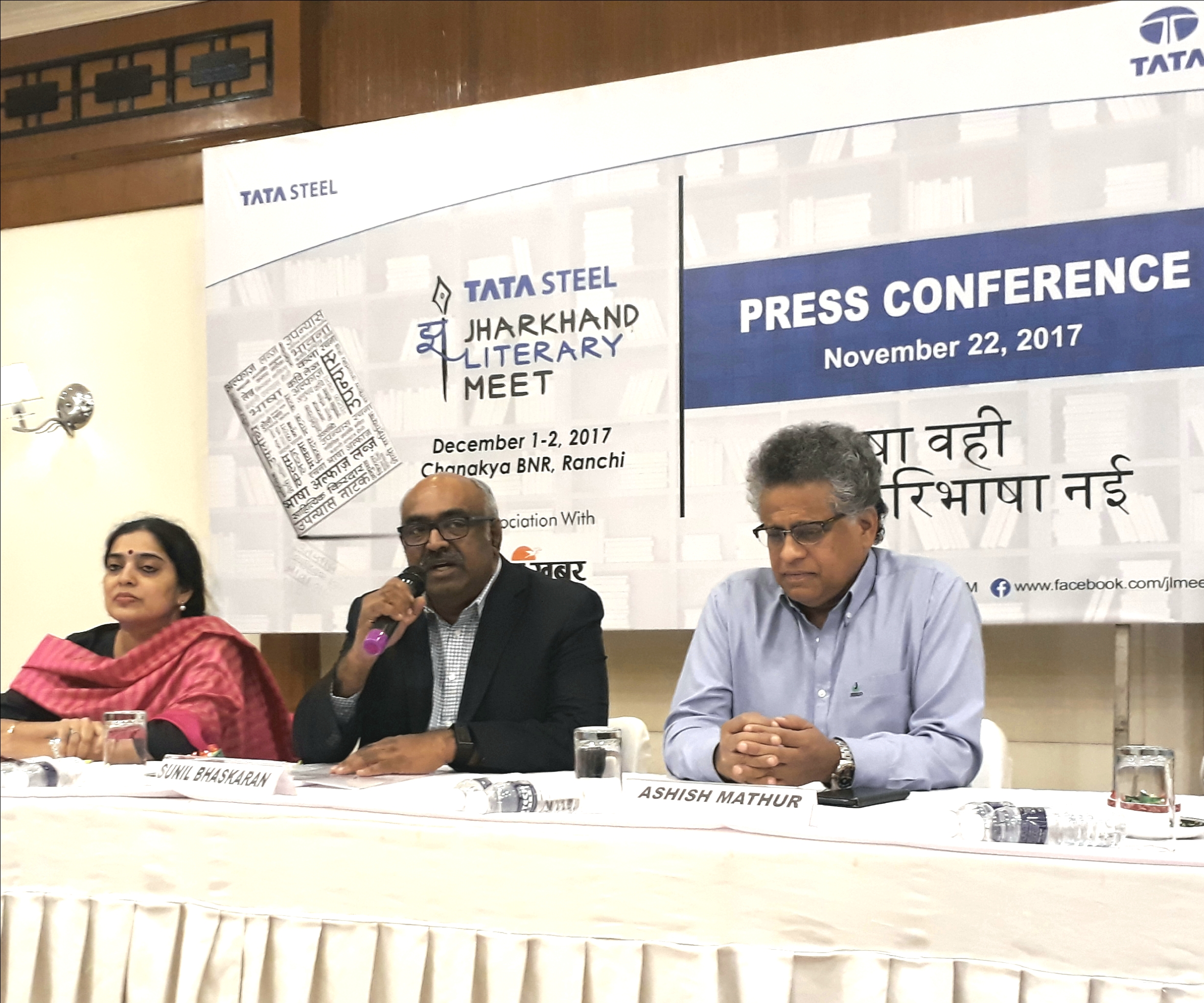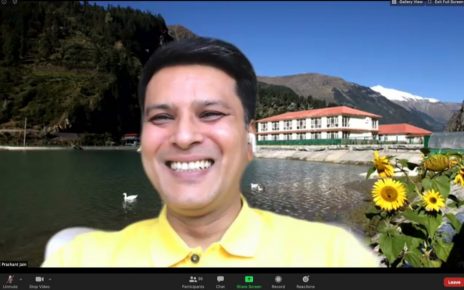Ranchi, Jharkhand | June | 05, 2020 :: TEDxKanke organized a Webinar with the title Futute Energy scenario in India. Speaker of the programme was Deepak Gupta, Ex-Chairman UPSC (IAS-Batch-1974) and Moderated By: Ritwik Mukherjee, Sr Assistant Editor, Deccan Chronicle
On is the issue of electricity demand
• Studies show that India’s demand will triple from 2015-2030. One major problem is that we have always been overestimating demand leading to many policy aberrations. I would rather base a conservative estimate of doubling if demand and ensuring that this demand doesn’t exceed.
• The biggest problem is electricity supply. Renewables will play a limited role but what is to be done about coal is a major issue.
• Our commitment to Paris Agreement is to reduce our fossil fuel contribution in power generation to 40% by 2030. Two further goals set by the govt. – production of 1.5 billion tons of coal in next 5 years and second is 450 GW of renewables by 2030. I believe none of the three goals is possible or desirable.
• It would be more realistic to shift these targeted to 2040. Efficient coal plants should be built at the earliest and no more plant should be built after 2030. Emissions should reduce through efficiency.
• The sources of future have to be solar and hydrogen. Lot of research on reducing the cost of production, storage and distribution of hydrogen. India must simply focus on a hydrogen economy and the possibility of 500-600 GW by 2050 (+/- 100 GW).
On the future of Solar
• Two main questions – How do we increase 20 GW of solar every year when we don’t have a manufacturing base? And will we always depend on China for import of wafers?
• Solar can be produced anywhere at any size. 10-15 MW plants could be set up all across the country on a distributed scale and supply power wherever consumed. This will reduce transmission costs and grids will become more stable.
• Global model has been solar roof-top. But in India, we are not encouraging this because of our tariff structure. Due to the rural subsidies, we have high charged for commercial, industrial and residential grids which the DISCOMs do not want to lose as customers. This calls for essential tariff reforms.
• Revolutionary opportunities for rural India. They can reduce the losses of DICOMs and supply power to the system from below. The problem of storage to provide power in the nights could be solved via having thousands of microgrids on site rather than having them miles away.
• There is also a possible solution of irrigation – that consumes 15%-17% of total electricity and the electricity boards lose thousands of crores. These could be replaced by solar pumps.
• Small solar plants over farmlands have emerged abroad. The decentralized systems could provide more jobs in rural areas that big plants and manufacturing units.
On import and cost of Oil
• With great costs and subsequent emissions, it is simply unsustainable. Therefore, consumption of oil products has to be reduced before 2030 and thereafter rapid decline is required.
• The main consumer of oil is transportation sector. The top priorities should be to shift goods transport from roads to railways and urban personal transport to public and/or shared and then shift to electric mobility. Immediate priorities should be electrifying two-wheelers, buses, autos, rickshaws.
• We need to reduce number of cars on the road. Electric car model is not suited for India, contrary to the public discussions which are all about charging infrastructure for cars. This will be very expensive and will be used very little and might only add to traffic congestion.
• The model that is better suited is swapping. Batteries can be replaced at a pump. This will reduce the capital cost of the electric vehicle, increase battery efficiency and benefits of improvement in battery technology will come to us – just like pay-per-kilometer use. To be done for buses, autos, 2-wheelers.
On the fundamental problem of energy storage and demand storage
• Unless we have storage systems, we cannot use solar or wind energy at large scale. Every small house can become a powerhouse. The real challenge is the manufacturing of batteries in India. We need a progressive policy that helps us achieve this. China is by far the global leader at this stage.
• We don’t discuss the management of base and pea load. A very important step would be to make green energy and design compulsory for buildings. We are busy building glass skyscrapers which are meant for colder climate, but the builders won’t listen to what is required.
• We need a to make highly efficient energy appliances and incorporate rules such as minimum AC temperatures (China and Japan do not permit AC temperatures below 24 degrees). This requires a behavioral change. But only then can we reach our Paris Agreement promise of 33% – 35% below 2005 emission intensity.
• India has a severe issue of energy equity which requires to be addressed. We need to also utilize our waste that can be used to produce energy. For all this to happen, we need to change our mindset as individuals and community, as policy makers and businesses. We need to innovate, commit funds and take risks.
Expert Comments:
By Mr Ujjwal Singh Bhatia, 1974 Batch IAS and Indian ambassador to the WTO
• I hope that neither of the two – going up of PFLs of thermal plants and the stimulus of 50000crire INR for coal economy – materialize as that would be a step backwards
• We need to answer the question how the ratio of renewables increases in the energy portfolio, reducing the share of fossil fuels. The issue goes down to the basic idea – can renewables tackle the base load? Is there an economical storage possible for renewable energy to enable us to meet the base load requirements?
• There have been some recent solar energy tenders by the govt. which included storage. The rate in the auction was cheaper than thermal power. This means that we are reaching a situation where renewable is at grid parity-plus including storage.
• I would not like to go into the industrial policy aspect of how to increase our manufacturing capacity of batteries and solar panels. But in terms of technology, it is possible to have a better capacity of solar compared to that of thermal energy. This should dramatically change the energy mix in the future, and we have to be very careful of our investments going into future.
• It is not about what government likes to do, but what makes investment sense – given that international funding is not available ow for thermal projects especially from institution like World Bank and IMF.
• This allows us to reduce our emissions domestically and provide leadership to the Paris Agreement.
By Mr Tim Patterson, Founder, Fuel Economy Solution & Health Economy Solution and a globally acclaimed sustainable energy solution expert, UK
• There are policy challenges and issues with investments. There is an intention and need to focus on local resources to decarbonize the economy. This includes solar but may also include 3g ethanol.
• We can change the future demand of transport with ethanol. With COVID, we have mobility trends where vehicle ownership going out and public transport is at risk. When we look at the future fuels and transport demand, there is great development in 3g ethanol where media is being used to soak the ethanol in a way to create Carnot gradients.
• If scaled, this can overtake Lithium which is already in high demand, while only 0.000007% of earth’s crust contains Lithium. Electronic devices, pacemakers, IoT, etc. will require rare earth and trace minerals. How do we compete for Lithium?
• Areas of decarbonization could move into areas like recycling of steel – eliminating the coal used in making of steel.
• India has an opportunity to move forward into the future on solar microgrids and local waste to energy from biomass and material with higher heat value with cleaner combustion.
By J C Morel, a top-notch business advisor-consultant and Director, BizDev, Italy
• India should look for best practices and innovation from other countries and try to incorporate in its own market. There is a need for this country to country corporation.
• In waste management for example, we have started to apply this technology few years ahead in many countries. There are many avenues that we can consider using waste as an important supplier for energy.
• This can be done on a local scale. The loss of jobs from coal mines can be easily replaced by manpower required in the local utilization of waste-to-energy and green energy installation.
• Make in India project would become essential in this regard. India is an important country and many companies in Italy dream of making joint ventures with India – to apply the technology in India that we develop here in Italy.
Audience Questions:
We will have to plan for phasing out of coal. We need to plan for displacing people from the coal mines which has proven very difficult, such as in Jharia. How do you see the solution to the phasing out of coal mining? Could continuing the coal mining be done in an alternative way?
By Mr Sunil Barnwal, IAS, Jharkhand Government
• All over the world, coal mines have been closed in a lot of places. This is a march of history and this is bound to happen There might be some possibility of gassing of coal, but on a large scale we need to start thinking about the possible alternatives of coal. This is imperative.
• There are so many things that have to be done in Jharkhand to prepare for alternatives so that the people ae not caught b surprised. There is a need to improve such as agriculture, water, irrigation and increase productivity – things that are not happening.
Key Participants: G K Pillai, Atul Agarwal, Amar Tigga, Sanjay Mishra, Sanjay Sahu, CM Chugh, Dr Shreeranjan (IAS)



